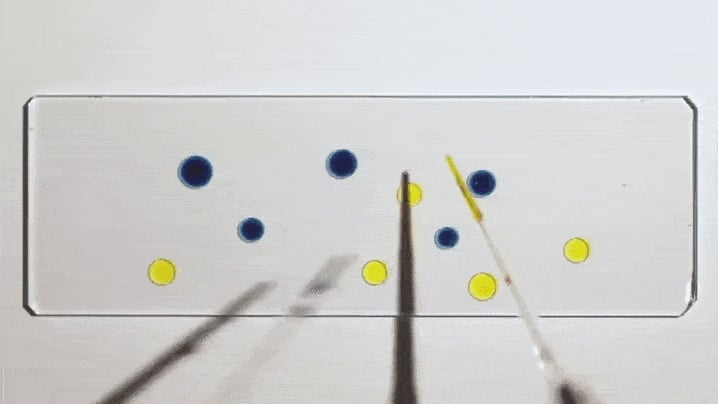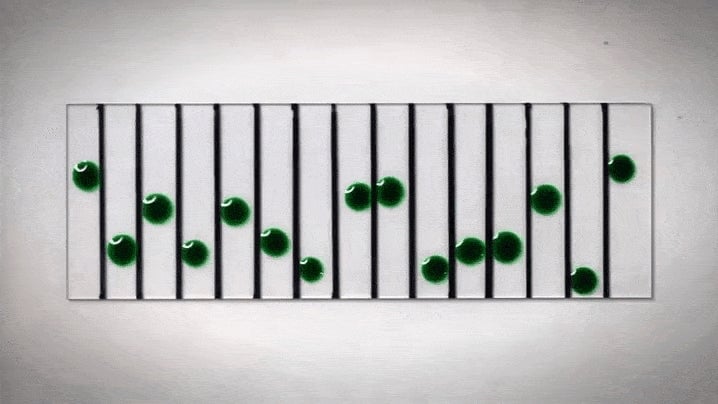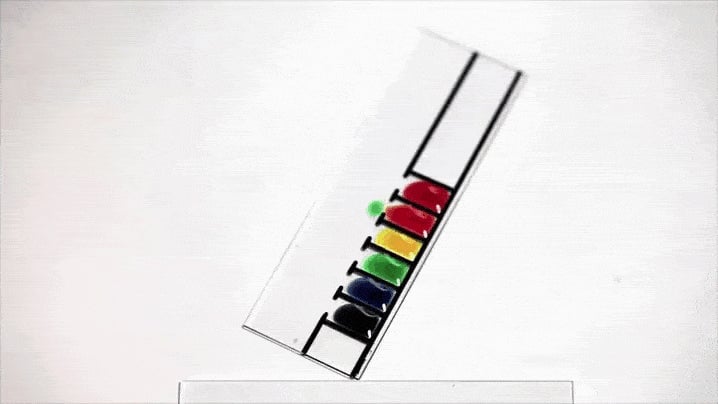Why these colored water droplets seem to be alive
One day, as an undergrad messing around in a science lab, Nate Cira observed a curious phenomenon. His droplets of colored water seemed to be alive.


One day, as an undergrad messing around in a science lab, Nate Cira observed a curious phenomenon. His droplets of colored water seemed to be alive.

When he got to grad school, he asked for an explanation from his supervisor Manu Prakash, an assistant professor of bioengineering at Stanford University. It took three years for Cira, Prakash, and postdoctoral researcher Adrien Benusiglio to figure out what was driving the droplets to dance in strange ways.
In their study published in Nature, they found that these droplets mimic living cells but do so based on simple physical principles. The motion is governed by two forces of two different liquids in a solution of water and propylene glycol (found in food coloring).
One force, surface tension, holds the liquid molecules together. It tugs hardest at molecules at the top, which creates a tumbling motion inside the droplet. The other, evaporation, is somewhat the opposite, where molecules on the surface of a liquid are forced to break away to form a gas. This determines the direction they move.
When two drops of colored water are placed near each other, evaporation increases the humidity in the tiny space of air between them. That, in turn, reduces evaporation and increases the surface tension on the inner side of each droplet. On the outer side, the rate of evaporation remains the same, and these imbalances pushes the droplets towards each other.

If they are of the same color—which is a proxy for the concentration of propylene glycol—then they combine to form a single bigger droplet. However, if they are of different colors, each droplet has a different amount of surface tension. That interaction plays out as a game of duck duck goose.
Researchers created fluidic machines by drawing tracks with a marker on glass slides, forming artificial barriers for the droplets.

The researchers say advancing our basic understanding of fluids can go a long way in improving many technologies. They hope to help develop, say, self-cleaning solar panels. But more rewarding is the fact they have been able to understand why nature does weird things.